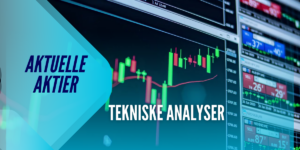Who knows: maybe Goldman will be right and the market will plunge – it certainly isn’t trading at all time highs and 25x GAAP multiples on fundamentals. But for now those who heeded Goldman’s warning and traded ahead of a 10% “pullback” have gotten crushed.
So has Goldman’s chief equity strategist David Kostin finally thrown in the towel?
Not yet. In fact, Kostin appears to be doubling down, and as he observes (correctly) overnight, the one sole reason behind the market rally in recent years – clearly not earnings growth as we wrote earlier – namely, multiple expansion, is now substantially overdone. And not just that: as Kostin points out, there have been only two time in history when the P/E multiple has expanded as much (75%) or more as it has in the current cycle: 1984-1987 and 1994-1994. Both ended with historic crashes. To wit:
The current P/E expansion cycle is now one of the largest in history. Since September 2011, S&P 500 forward P/E has grown by 75% (from 10x to 18x). This expansion has only been surpassed twice since 1976, when the multiple rose by 111% from 1984-1987 (ending with the 22% Black Monday collapse) and by 115% from 1994-1999 (ending with the Tech Bubble pop). During the nine previous P/E expansion cycles the multiple typically climbed by 50%.
Thanks, David, we get it. It’s going to end very badly. Just maybe tell your friend Bill Dudley to stop pushing it ever higher and assuring the resulting crash will be that much worse, maybe?
And speaking of that, will the market continue to levitate on even more multiple expansion or is a sharp drop just around the corner? According to Goldman, the answer is the latter:
Last week’s commentary highlighted several reasons why we believe the current 75% P/E multiple expansion cycle is unlikely to continue:
- already extended P/E multiple of 18x represents the 88th percentile of historical valuation;
- lack of earnings growth with full-year 2016 adjusted EPS expected to be flat for the third consecutive year (operating EPS up 9%);
- downside EPS risk as low interest rates boost pension obligations and constrain Financials’ profits;
- rising wage inflation that will pressure current near-record high margins;
- the prospect of a more hawkish Fed than the market now expects.
We maintain our S&P 500 year-end 2016 price target of 2100, although 5%-10% near-term downside risk remains high.
Instead of ending it on an apocalyptic note, here is Goldman with a useful detour on the most topical issue right now: the Fed model.
The impact of low interest rates on equity valuations is a hotly debated topic among investors. The Fed model compares the gap between the earnings yield of equities (5.7%) and the 10-year US Treasury yield (1.6%). The current yield gap equals 415 bp, slightly below its 10-year average (440 bp) but well above its 40-year average (250 bp). See Exhibit 1.
The Fed model paints a similar picture for S&P 500 valuation when using Treasuries, TIPS or BBB yields. A common criticism of the traditional Fed model is that it compares equity returns in real terms to Treasury yields in nominal terms. An inflation-adjusted time series such as Treasury Inflation Protected Securities (TIPS) may arguably provide a more accurate representation of the yield gap. However, the yield gap relative to history is little changed when using TIPS. The current yield gap using TIPS equals 560 bp, slightly below the 10-year average of 640 bp. Similarly, some investors prefer to use BBB corporate bond yields instead of 10-year US Treasuries to represent the cost of capital faced by firms. The current gap using BBB yields equals 240 bp, in line with the 10-year average of 235 bp.
As we noted last week, the yield gap may narrow from either direction (rising bond yield or falling earnings yield which means higher P/E multiple). However, the yield gap has already fallen by 393 bp this cycle (from a record 807 bp in 2011 to 415 bp). Assuming the 10-year Treasury yield rises to 3.1% and the earnings yield remains unchanged at 5.7%, the yield gap would be equal to long-term average of 250 bp and imply a S&P 500 level of 2230, 3% above the current level. Conversely, if the bond yield remains static at 1.5%, mean reversion of the yield gap would require the earnings yield to fall to 4.0% equivalent to a P/E multiple of 25x and an index level of 3070, up 42%. A more modest bull case would involve a compression of the yield gap to 350 bp with interest rates remaining at 1.8%, implying a P/E of 19x and a S&P 500 level of 2320, 7% above the current level (see Exhibit 2).
A rise in the P/E multiple above 20x is unlikely, in our view. Although equity valuations are typically highest during periods of low interest rates, the current 18x P/E stands at the upper end of the historical valuation range. During the last 40 years the only instance in which S&P 500 forward P/E exceeded 20x was the Tech Bubble (peak of 24x in December 1999).
Finally, some thoughts on what has been the better trade YTD: stocks or bonds…
Bonds have delivered a higher risk-adjusted return than stocks YTD. Bonds have returned 7.6% YTD as rates fell from 2.3% at the start of the year to 1.6% today with realized volatility of 5. The S&P 500 has posted a similar absolute return YTD (+7.2%) but has been on a rollercoaster path (volatility of 12). The YTD Sharpe Ratio for equities is just 0.6 versus 1.5 for bonds.
… and what will be going forward:
Consensus expects S&P 500 will generate a higher risk-adjusted return than bonds. A weighted average of consensus price targets for all S&P 500 constituents implies an index level of 2330 in 12 months (+9.8% return with dividends). Implied volatility for the S&P 500 over the next 12 months equals 15.9 leading to a prospective Sharpe Ratio of 0.62. Futures imply a 12 month return of 0.7% for 10-year Treasuries (ending yield of 1.7%). Implied volatility of 5.1 results in a prospective Sharpe Ratio of 0.15 for bonds.
In contrast, we forecast a similar 12-month risk-adjusted return for equities as the futures market implies for Treasuries. Our 12-month S&P 500 target equals 2150, reflecting a potential total return of 1.5% including dividends. The resulting equity Sharpe Ratio would be 0.10, similar to the 0.15 ratio for bonds. Since 1990, the risk-adjusted returns for equities have typically been roughly equal to bonds (0.98 vs. 1.01).
What Goldman does not touch on, however, is the circular nature of fund flows, where if bond yields do surge – as some are warning may happen soon on fears of an inflationary spike – it will lead to not only a rates VaR shock and massive MTM losses (as big as $2.5 trillion), but also to downstream liquidation in equities, which in turn will lead to a flight to safety… right back into bonds. And so on until something finally does break.
















